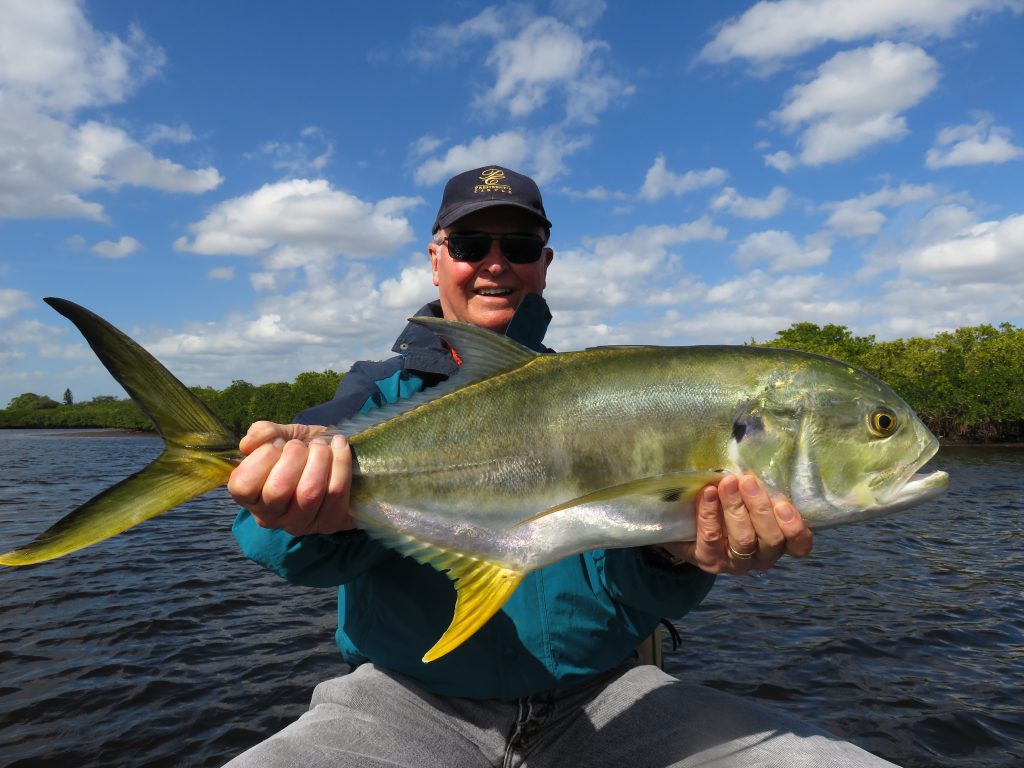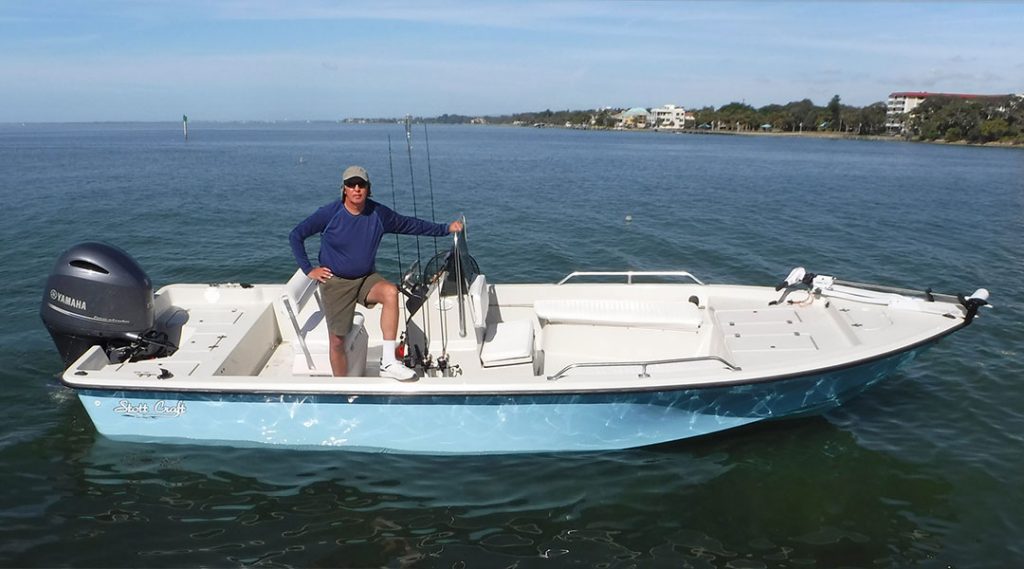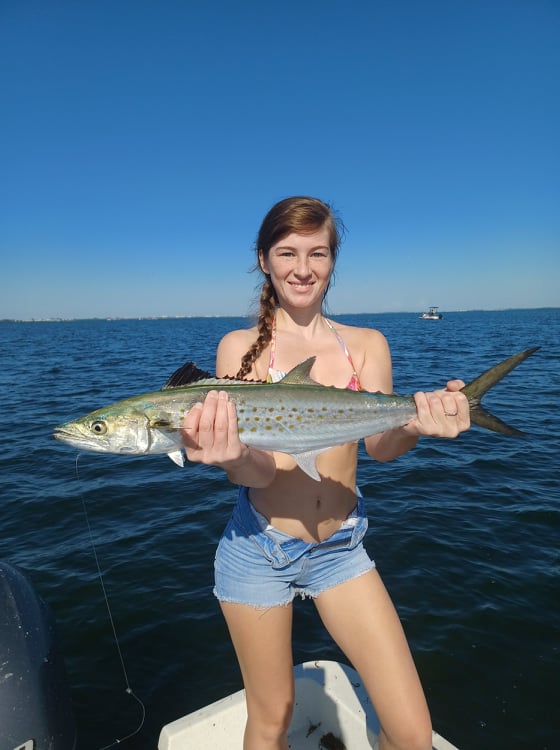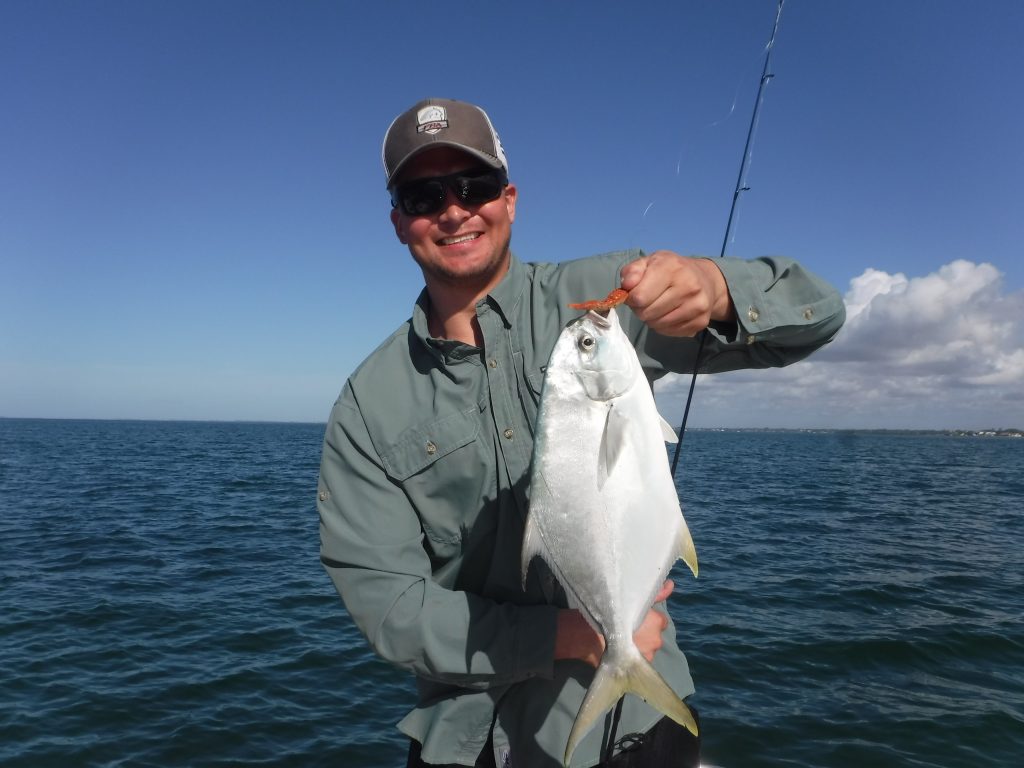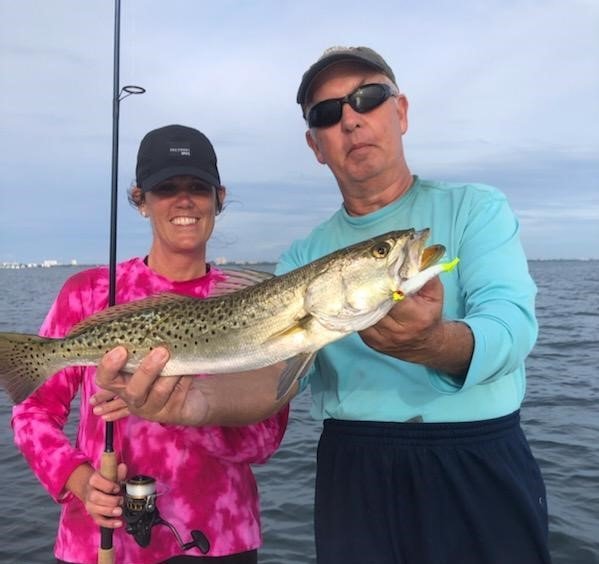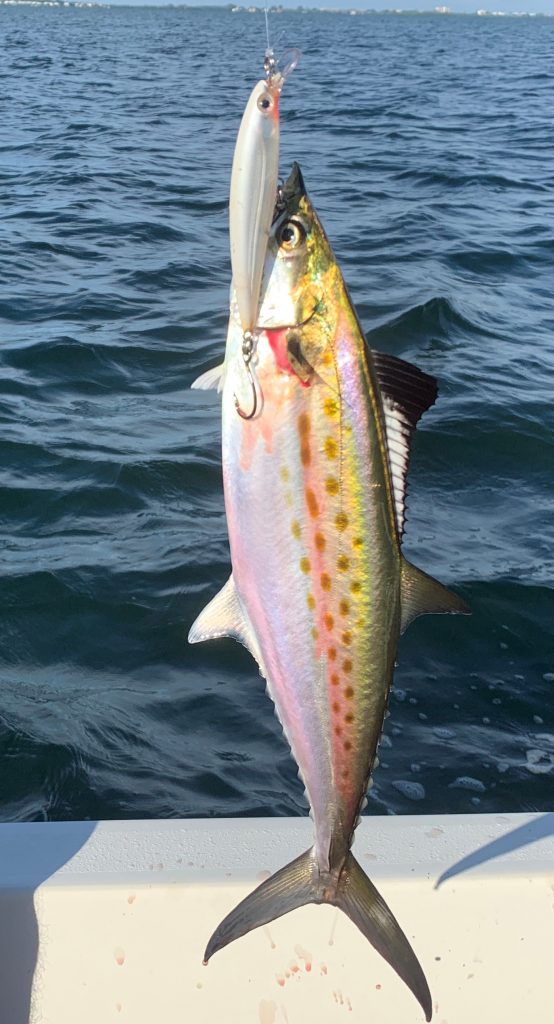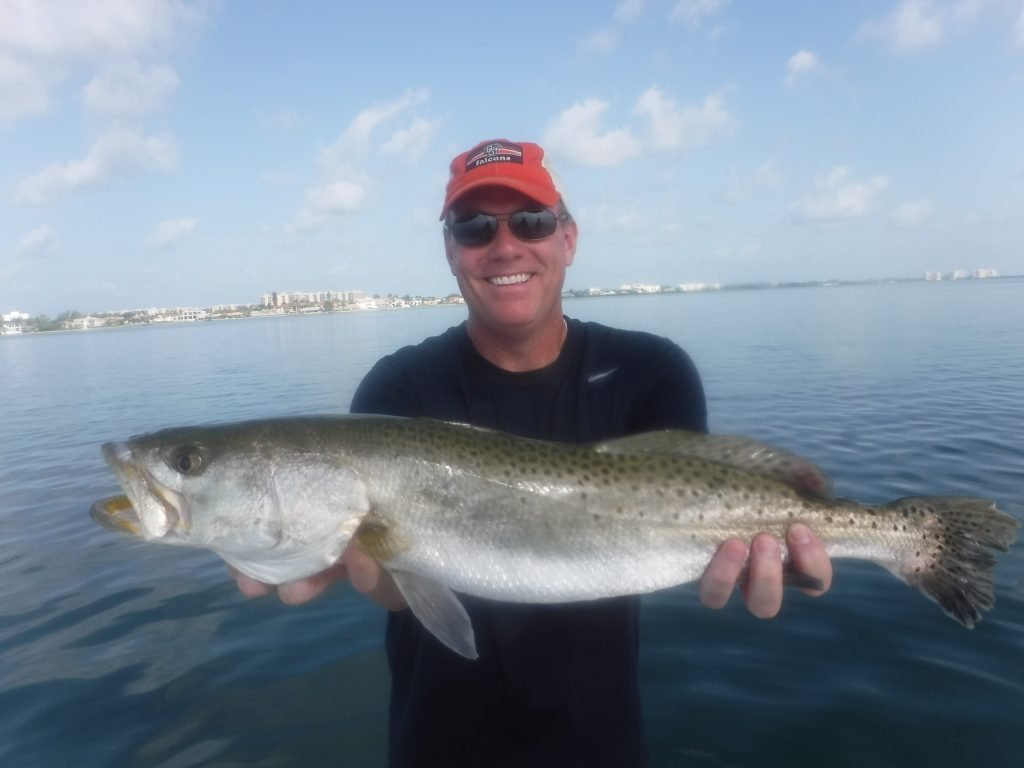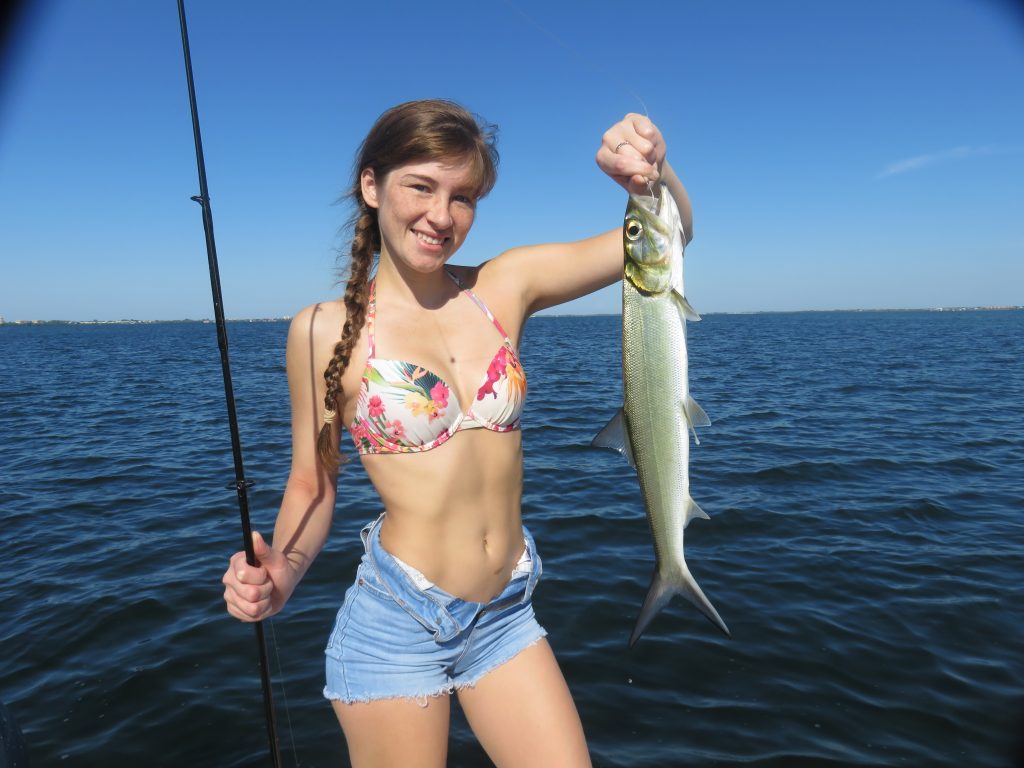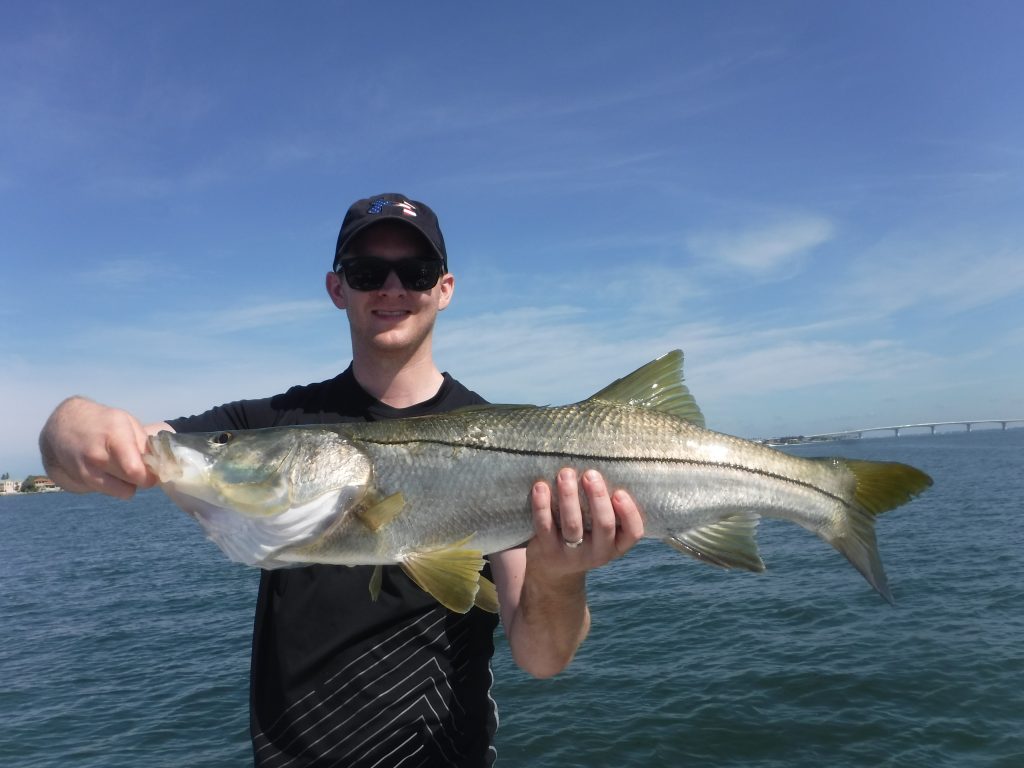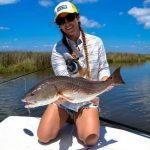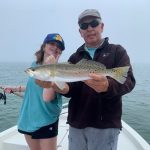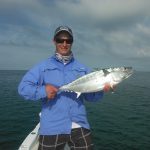Flats Fishing Charters in Siesta Key!
This article will thoroughly cover flats fishing charters in Siesta Key. Florida is flat and that topography continues underwater as well. I spend a lot of time on my charters fishing submerged flats, particularly those in slightly deeper water, from 6 feet deep to 10 feet deep. In most cases, these are flats with submerged vegetation.
Flats are natural places for fish to feed. In Sarasota, there is very little natural hard structure or cover. Grass and vegetation are the primary cover, by far. Grass and other vegetation can only grow as deep as sunlight will penetrate. Depending on water clarity, the maximum depth in Sarasota which grass will be found on the flats is around 10 feet.
Fish are also found on the very shallow flats as well. It sounds contradictory, but in many cases larger fish are actually found in shallow water. This is perhaps due to the fact that as they grow larger, fish have fewer predators and are therefore more comfortable in shallow water. Also, shallow water flats and oyster bars offer ample forage for game fish.
My name is Capt. Jim Klopfer and I am a fishing guide on Siesta Key. I run many Flats fishing charters in Sarasota throughout the year. The flats are the most reliable place to find fish throughout the year. In this article, I will thoroughly cover flats fishing in Sarasota.
Flats fishing charters in Siesta Key
First off, let’s define what a flat is. A flat is basically a large area of similar depth. A flat can occur in any water depth. A large area that is flat and of uniform depth in 50 feet surrounded by water that is 200 feet deep can still be considered a flat. However, when we are discussing flats fishing in Siesta Key waters, we are talking about flats 10 feet deep or less.
I find the majority of my fish on my flats fishing charters in water between 6 feet deep and 10 feet deep. Submerged vegetation will hold shrimp, crabs, and bait fish. This in turn will attract the predatory fish that anglers are seeking. One of my favorite aspects of fishing the deep flats is the variety. Anglers can expect to catch many different species including spotted sea trout, Spanish mackerel, pompano, bluefish, ladyfish, jacks, catfish, sharks, grouper, snapper, cobia, and even tarpon!
Read my comprehensive article on fishing in Sarasota
When many anglers hear the term flats fishing, they envision a shallow draft skiffs being poled across a very shallow flat. This is a typical way that anglers fish in the Florida Keys and other locations. Anglers going out on flats fishing charters in Siesta Key can also have this experience. However, this type of fishing is much more challenging and success is much less guaranteed. Targeting fish in very shallow water can produce trophy fish and can be very rewarding for those with the patience to do it.
Fishing the deep flats in Siesta Key
As mentioned earlier, I spent a lot of time on my fishing charters working the deep grass flats. This is an excellent pattern and technique for producing both action and variety. It is challenging enough for experienced anglers get easy for novice anglers and children to be able to do successfully.
My favorite technique when fishing the deep flats is to drift across while casting artificial lures. The number one lure by far is the jig and grub combination. This is an excellent bait that will catch just about every species that swims. It consists of a weighted jig head, with one quarter ounce of being the most commonly used size. Some type of soft plastic grub is then threaded onto the hook.
Choices are endless when it comes to using soft plastic fishing baits, in style, size, color, and manufacturer. I use to soft plastic lures on my flats fishing charters in Sarasota, Bass Assassin Sea Shad and Gulp Shrimp baits. That is not to say that other baits are not effective, far from it, but these are my two personal favorite soft plastic lures.
Artificial lures are productive on the deep grass flats
The jig and grub combo is very easy to use. I set the boat up in a spot to drift, taking into account the wind and tide. As the boat drifts across the submerge grass, anglers cast jigs out ahead of the boat. The lure is allowed to fall a few feet that is retrieved back in using a series of hops. Most bites occur as the lure falls, simulating dying or wounded prey. Anglers can mimic shrimp or bait fish, depending on the type of tail used.
Other artificial lures will produce as well when drifting the deep grass flats in Sarasota Bay. Plugs can be very effective, particularly when fish are feeding sporadically on the surface such as Spanish mackerel and bluefish. My favorite plug is the Rapala X-Rap jerk bait in the 08 size. It has a very erratic action and will draw strikes from active fish. The MirrOlure MirrOdine is an excellent sub surface plug that has a more subtle presentation and works very well on spotted sea trout.
Spoons are also very effective lures that I use on flats fishing charters in Siesta Key. They are a great choice for novice anglers as they cast very easily and have a lot of built in action. All the angler basically has to do is make a long cast and reel steadily, with the occasional twitch. Spoons are very effective for Spanish mackerel in particular, but will also catch ladyfish, bluefish, trout, and other species.
Fishing with live bait on the deep grass flats
Live bait can certainly be used when flats fishing as well. The number one live bait by far in my area is a shrimp. Shrimp are available all year long both on the flats and in local bait shops. Every saltwater species that swims will happily devour a tasty shrimp! Small live bait fish can be used as well, particularly in the warmer months.
Live shrimp can be used in a similar fashion as artificial lures. One tried-and-true method in Florida is to fish a live shrimp under a popping cork. A popping cork is a noisy float that actually helps attract the fish. The cork is placed 3 feet or so above the hook and a shrimp is hooked through the horn. The rig is cast out and allowed to settle. When twitched sharply, the popping cork will put out a sound that simulates feeding fish. This will attract game fish to the shrimp. It is safe to say that more spotted sea trout have been caught by anglers using this method than all others combined.
On the deeper grass flats, say from 7 feet deep to 10 feet deep, I prefer to free line a live shrimp. The popping cork will often suspend the shrimp a little too high in the water column. Free lining a shrimp is very easy; the shrimp is hooked through the head and then just cast out or let out behind the boat. This is a very easy way for children to fish. As the boat drifts along, the shrimp follows behind, swimming in a very natural manner. This works very well for fish such as bluefish, mackerel, and ladyfish, which are often found on the deeper sections of the flat.
Live bait fish can be used on the deep grass flats in Sarasota as well. Small pin fish and grunts can be free lined or fished under a cork. One extremely effective method is called “live bait chumming”. Using a cast net, I feel the live well with hundreds and hundreds of small silvery fish called white bait. These are scaled sardines or threadfin herring for the most part.
Once the bait is obtained, I choose a flat and anchor the boat. Then, I take handfuls of live bait and simply toss it out behind the boat. This is a sort of buffet for the game fish and if any are around it won’t take them long to come in and start eating the free bait. Hooked baits are then tossed into the fray and a hook up soon follows. This is an excellent technique when fishing with kids as the action can be virtually nonstop.
Shallow water flats fishing charters in Siesta Key
Experienced anglers that are seeking a bit more of a challenge may opt for a shallow water flats fishing charter in Sarasota. For the most part, the species being targeted will be snook, redfish, larger spotted sea trout, and jack crevelle. While other species may be encountered, these are the top game fish that are found in water 2 feet deep or less.
Game fish in shallow water are much more spooky and finicky that are those in deeper water. They must innately know that they are more vulnerable and exposed in the shallow water. Anglers need to make long, accurate casts and be as reasonably quiet as possible. At times, anglers will actually cast to fish that they see. However, most of the time they will be blind casting to particular spots.
For the most part, I use artificial lures when fishing shallow water. They allow anglers to cover a lot more water in search of fish than they can when using live bait. A gold weedless spoon is an excellent search bait. It cast a long way and puts out a lot of flash and vibration while remaining virtually weedless even in very shallow water. It is the top artificial lure for redfish in particular.
Plugs can be used when fishing shallow water flats as well. The above-mentioned Rapala jerk bait works well and water that is a couple feet deep and realistically mimics in size and color the finger mullet and other bait fish in our area. In very shallow water it will hang up in the grass. Anglers can use a top water plug in this situation. Fishing top water plugs is great fun and will produce some explosive strikes!
Soft plastic lures are certainly effective on the shallow flats as well. I will go lighter on the jig head, down as light as 1/16 of an ounce. Also, I use specifically designed flats jig heads for this application. The angle of the head is different, allowing it to skim through the grass better and it also has a very stout hook in the event that a large redfish or snook is hooked.
Top spots to find snook, reds, and trout on the shallow flats are oyster bars, mangrove shorelines, and potholes. I personally prefer the edges of oyster bars as they have been particularly productive for me. On lower tide stages, potholes (which are slightly deeper depressions in the flat) will hold fish. Mangrove shorelines can be productive, especially if there is a depth change. Man made structure such as docks should not be overlooked, either.
In conclusion, this article on flats fishing charters in Siesta Key will help anglers understand the options available in the techniques used to be productive in these situations.
